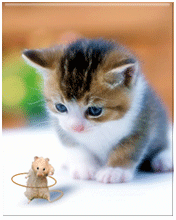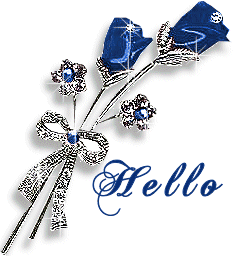1. Naturalism Painting
2. Realism Paintings
3. Painting Expressionism
4. Cubism Painting
5. Romanticism Painting
Kinds Flow Definition Painting and its
That is a form of naturalism art painting (visual art) in which artists tried to describe all things in accordance with nature or relay natural, means adapted to catch our eye. So that the painting was made - is similar or identical to the real, then the composition, contrast, perspective, texture, dark coloring and light work as possible, as precisely - exactly. in the art is an attempt to show the objects with an emphasis realistic natural setting. This is a further deepening of more realism movement in the 19th century as a reaction to the establishment romanticism.
One of naturalism in American visual artist is William Bliss Baker, whose landscape paintings are considered the best realist paintings of this movement. Atu Salahs important part of the naturalist movement is Darwinism's view of life and the damage that humans have inflicted on nature.
List of Painters Naturalism:
§ Soeboer Doellah
§ William Bliss Baker
§ Raden Saleh
§ Hokusai
§ Affandi
§ Fresco Mural
§ Basuki Abdullah
§ William Hogart
Frans § Hail
Realism in art means that display business subject in a work as appeared in the daily lives without additional frills or a particular interpretation. Meaning can also refer to efforts in art for junior fashion show you the truth, even without hiding bad thing though. The discussion of realism in art can also refer to the cultural movement that began in France in the mid-19th century. But the work with the idea of realism is already there in 2400 BC found in the city of Lothal, which is now better known as India.
Realism as a cultural movement
Realism became famous as a cultural movement in France as a reaction against Romanticism understanding established in the mid-19th century. This movement is usually associated closely with the social struggle, political reform, and democracy.
Realism and then dominate the world of art and literature in France, England, and the United States in about the year 1840 to 1880. Adherents of the French literary realism include the name of Honoré de Balzac and Stendhal. While the well-known artists are realist Gustave Courbet and Jean François Millet.
Realism in art
Realist artists always try to show the daily life of the character, atmosphere, dilemmas, and objects, to achieve the goal Verisimilitude (so alive). Realist artists tend to ignore the theatrical dramas, the subjects that appear in a room that is too broad, and the classic forms of others who have more popular first time.
In a broader sense, business realism will always happen every time an artist tried to observe and imitate the forms in nature accurately. For example, a painter at the time of the Renaissance picture, Giotto can be categorized as a work of realist artists, because his work has been to better imitate the physical appearance and volume of better things than that have been cultivated since the days of Gothic.
Honesty in the displaying every detail of the object seen also from the works of observation RembrandtBarbizon School focuses closer to nature, yag then open the way for the development of Impressionism. In England, the Pre-Raphaelite Brotherhood rejected the idealism of Raphael's followers and lead to a more intense approach of realism. which is known as one of the best realist artists. Then in the 19th century, a group in France known as the
Trompe l'oeil technique, is the art techniques which show extreme artists effort to bring the concept of realism.
List of famous painters realism
· Karl Briullov
· Ford Madox Brown
· Jean Baptiste Siméon Chardin
· Camille Corot
· Gustave Courbet
· Honoré Daumier
· Edgar Degas
· Thomas Eakins
· Nikolai Ge
· Alexander Gierymski
· William Harnett
· Louis Le Nain
· Édouard Manet
· Jean-François Millet
· Yefimovich Ilya Repin
Understanding the flow of Expressionism in painting that gave priority to freedom of form and color to put emotion or feeling.
Ekspressionisme is the tendency of an artist to distort reality to the emotional effects. Expressionism can be found in the work of painting, literature, film, architecture, and music. The term is usually more emotion to the type of emotion into anger and depression than happy emotion.
Painter Matthias Grünewald and El Greco can be called expressionist.
List of Painters Expressionism from the 20th century is classified as:
· Germany: Heinrich Campendonk, Emil Nolde, Rolf Nesch, Franz Marc, Ernst Barlach, Wilhelm Lehmbruck, Erich Heckel, Karl Schmidt-Rottluff, Ernst Ludwig Kirchner, Max Beckmann, August Macke, Elfriede Lohse-Wächtler, Ludwig Meidner, Paula Modersohn - Becker, Gabriele Münter, and Max Pechstein.
· Austria: Egon Schiele and Oskar Kokoschka
· Russia: Wassily Kandinsky and Alexei Jawlensky
· Netherlands: Charles Eyck, Willem Hofhuizen, Jaap Min, Jan Sluyters, Jan Wiegers and Hendrik Werkman
· Belgium: Constant Permeke, Gust De Smet, Frits Van den Berghe, James Ensor, Floris Jespers and Albert Droesbeke.
· France: Gen. Paul and Chaim Soutine
· Norway: Edvard Munch
· Switzerland: Carl Eugen Keel
· Indonesia: Affandi
Cubism is a modern art movement in the early 20th century pioneered by Picasso and Braque. Basic principles common to Cubism that describe the object shape by cutting, distortion, overlap, simplification, transparency, deformation, organize and various looks. This movement started in the media paintings and sculptures by each approach
in Cubism, his work forms using geometric shapes (triangles, squares, cones, cubes, circles and so forth) Cubism artists often use collage techniques, for example, put pieces of paper newspapers, pictures and posters, and others.
Cubism as the originator of the style comes after nonimitative Picasso and Braque as well dig a primitive form of art affected, such as Liberia ethnic sculpture, bas-relief (basrelief) the Egyptians, and the masks African tribe. Also the influence of Paul Cezanne paintings, especially works of still life and landscape, which introduces a new geometry to break the Renaissance perspective. This made an impression on them that shed new flow.
The term "cabbage" itself, thanks to observations tercetus some critics. Vauxelles Louis (French critic) after seeing a work of Braque in the Salon des Independants, berkomenmtar that the work of Braque as reduces everything to little Cubes (put everything on the form of small cubes. Gil Blas as a Braque painting mentioned bizzarries cubiques (magic squares). Meanwhile, Henri Matisse called petits arrangements Cubes (small cubes). So for the next term Cubism used to characterize the flow as it works.
Early development
In the early development stage, Analytic Cubism phase which has continued on Synthetic phase. In Cubism 1908-1909 more complex lead immediately in the style of a more systematic and ranged between years 1910-1912. This initial phase is often termed as Analytical Cubism painting objects to be analyzed. All elements of the painting must be fragmented consisting of facet-fasetnya or in the form of a cube.
Object paintings sometimes seem drawn half from the front right, while the other half viewed from the rear or side. Human faces or animal heads are exposed in such a way, a cursory look from the side with the eyes should be visible from the front.
In this phase of Analytical Cubism, the artist has actually made a statement in the painting of the fourth dimension, namely space and time because the pattern has been abandoned a long perspective.
If the pereiode analytical Braque and Picasso were still locked in a limited creativity, different from the Synthetic Cubism phase. The sprouts are no longer fixed on the three basic colors in the scratch-goresannya. The theme of their works were more varied. With the courage to leave the point of view that become his trademark to move to the next innovative level.
The development work of the next Cabbage is with their attention to the reality. By inserting the cuttings are words or phrases taken from suratpaper Colle. news on canvas and then glued to form a geometric composition. Experiments like this patch technique commonly known as collage or
List of Painters Cubism:
* Paul Cezane
* Pablo Picasso
* George Braque
* Metzinger
* Albert Glazez
* But Mochtar
* Moctar Apin
* Fajar Sidik
* André Derain
Fauvism was an art school in a fairly short-lived before the beginnings of modern art. Fauvism name comes from the word innuendo "fauve" (wild beasts) by Louis Vauxcelles when commenting Salon d'Automne exhibition in his article for the supplement edition of Gil Blas October 17, 1905, page 2.
The popularity of this flow starts from Le Havre, Paris, to Bordeaux. The maturity concept is achieved in the year 1906.
Fauvism was the flow of value in the expression to capture the atmosphere that is painted. Unlike the work of impressionism, painter fauvis argues that color harmonies that are not connected with reality in nature it would be better to show a personal relationship with the natural artist.
The basic concept can be traced Fauvism first time in 1888 from Paul GauguinPaul Sérusier comments: to
"How do you see these trees? They are yellow. So, put in yellow; this shadow, rather blue, paint it with pure ultramarine; these red leaves? Put in vermilion."
"How do you interpret those trees? Yellow, because it add yellow. Then the shadow looks a bit blue, so add ultramarine. Leaves are reddish? Add just Vermillion."
Everything related to observations objectively and realistically, as happens in naturalist painting, is replaced by understanding the emotional and imaginative. As a result the concept of color and nuance would seem poetic. The colors used clearly no longer adapted to the color on the field, but the painters followed a personal desire.
The use of line in Fauvism painting simplified so that the viewer can detect the presence of clear lines and strong. As a result of easily identifiable objects without having to consider many details.
Fauvis painter called for rebellion against the art establishment that has long helped by the objectivity of science as it happens in the flow of impressionism, although studies of their previous painter of still used as a basis for painting. This is especially true in the early popularity of this genre in the period 1904 to 1907.
Influence
Initial influence of this flow may well come from the request initiated by the works of Paul Cezanne, Gustave Moreau, Paul Gauguin, and Vincent van Gogh. Although the painter is not involved in the movement of Fauvism and different era with the start of this school, but his work became a reference for the young painters who would later become a painter fauvis.
Although only a short-lived, Fauvism flow a milestone of modern art concepts next.
Fauvism Painters List:
· Henri Matisse
· André Derain
· Georges Braque
· Albert Marquet
· Henri Manguin
· Charles Camoin
· Henri Evenepoel
· Jean Puy
· Maurice de Vlaminck
· Raoul Dufy
· Othon Friesz
· Georges Roua









